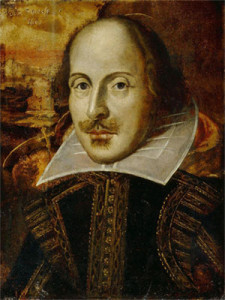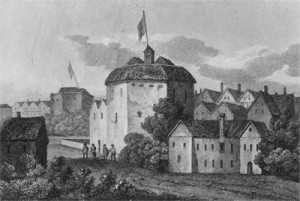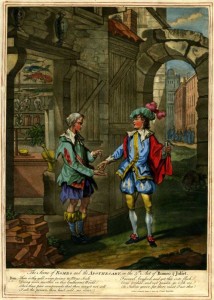Shakespeare unfurls flags

This year marks the 450th birthday of William Shakespeare. No one is sure in what month and on what date he was born, but tradition has placed it in late April because he was baptized on April 26, 1564. He spent his life writing, and his writing often turned to flags.
Take this passage from “King Edward III,” when a sailor declaims: “Near to the coast I have descried, my lord,…the proud armada of King Edward’s ships,…which, at the first far off when I did ken,…their glorious bright aspect, their streaming ensigns wrought of coloured silk, like to a meadow full of sundry flowers….And on the top gallant of the admiral…the arms of England and of France unite.”

In that speech, the mariner uses two synonyms for flags: ensign and gallant. The latter refers to a flag flown on the stern of a ship.
Iago, the villain in “Othello,” deploys “flag” metaphorically when he speaks of his need to pretend to be something he is not. Says Iago: “Though I do hate him as I do hell pains, yet for necessity of present life I must show out a flag and sign of love, which is indeed but sign.”
In other words, he was, as the expression goes — most often in reference to pirates — “flying under a false flag.”

Romeo, in “Romeo and Juliet,” uses both “ensign” and “flag” in the soliloquy he delivers upon finding out that his beloved is dead. Addressing Juliet, he says she looks as if she were still alive and blushing with life: “Death, that hath sucked the honey of thy breath, hath had no power yet upon thy beauty. Thou art not conquered. Beauty’s ensign yet is crimson in thy lips and in thy cheeks, and death’s pale flag is not advanced there.”
Perhaps Shakespeare’s favorite synonym for flag was “colours,” which he used dozens of times, often in his history plays. That’s to be expected since he was writing about kings and other royalty who used flags to identify themselves and signal their armies.
An example occurs in “Henry VI, Part 3,” when a character shouts, “Sound trumpets! Let our bloody colours wave! And either victory, or else a grave.”
Whatever variations he used, Shakespeare was obviously a flag-fanatic, although that’s a phrase he never employed.
(Next week: More about Shakespeare’s theater and its flags.)
